#doric order
Explore tagged Tumblr posts
Text

Picnic in the Temple of Hera at Paestum
#art#picnic#temple of hera#paestum#romantic#romanticism#neoclassical#classical antiquity#ruins#architecture#magna grecia#ancient greek#italy#campania#europe#european#doric order#temples#temple#history#landscape#salerno#southern italy
443 notes
·
View notes
Text
Miles' guitar in 505 is the anchor to the ship that carries Alex's voice.
#arctic monkeys#505#alex turner#miles kane#milex#Its heartbreaking how well they compliment each other#a fragile voice against a solid guitar#ionic and doric order#yin and yang
55 notes
·
View notes
Text
(:
#no im back again actually fuck bed im not going u cant make me#see english yeah#pisses me off first of all. neck of them imposing on us like that#BUT one thing i do love is how those of us whos language was taken have like bastardized eng#weve made hiberno eng (theres a dictionary available online thats acc unreal if linguistics is smthin u like)#scots have dorics and afaik a few bonus ones#similarly theres aave which runs in the same vein#and whats mad is so many of these languages and their phrasings overlap#also doric should be singular only copped that now my b#but anyway like#yeah alrih technically am speakin english wah wah wah shut up whatever#but am not tho am i. sentence order is whack. present tense is whack. “”“slang”“” is whack#this is smthin im rly interested in and LOVE how some countries go yeah alriht ill speak it if i have to but ur not gna like what i do w it#but anyway shut up shitting on people thats so boring have a lil joy in ur life#read a book. may i suggest Hiberno English or anything by blindboy boatclub#sound
4 notes
·
View notes
Note
Oh! What languages does Kitty know? Is English her first language? How well/fast do you think she'd pick up on other languages?
//Kitty's first language is English. I think if she were to learn another or know the most phrases in another, it would be Spanish since she's from California. In the UK most people learn European Spanish but I think Kitty would learn South American Spanish, probably through Mexican Spanish audio tapes or watching telenovellas and dubbed cartoons. Although I can also see her learning Dutch or German since she found out her grandparents were from The Netherlands (mother's side) and Germany (father's side.) Perhaps in emigrating they were even fleeing the onset of the Second World War?
Kitty might be quick to pick up phrases but struggle with some pronounciation. She'd be stronger in some languages more than others, for example she'd find any language with a totally different alphabet quite tricky as an English speaker. But then she'd remind herself if the Chinese exchange student in her class can learn English why shouldn't she push herself to learn Dutch?
I think in terms of which language she thinks sounds the nicest to the ear, it would probably be French. French and Belgian cartoons have such an elegance, class and charming wit about them. Oh God imagine her bumping into TinTin 😂
#marinerainbow#kitty hawkins#about kitty#//this is coming from someone who has tried to learn like three languages at once and ended up remembering a lot of vocab#//...but then butchering the word order#//I'm quite good at picking up German because it's similar to Scots/Doric which my familh speaks#//Also practiced Scottish Gaelic Greek and Spanish#//As someone who also has English as a first language I do not envy people trying to learn it! 😅#//Oh and Japanese I love the way Japanese sounds
2 notes
·
View notes
Text


self=proclaimed greek architecture fans will look at these two buildings and say i see no different hate is hate
1 note
·
View note
Photo
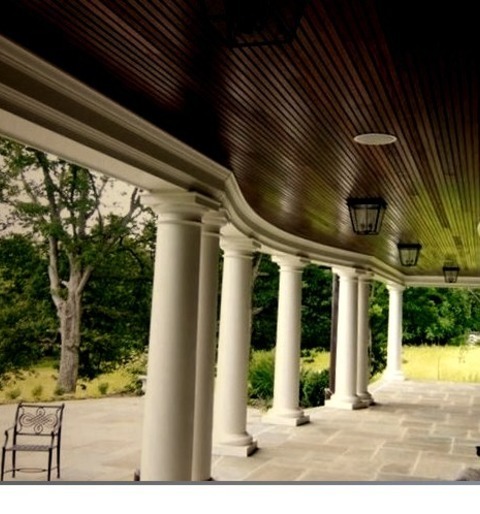
Porch - Traditional Porch Huge classic stone back porch idea with a roof extension
0 notes
Photo
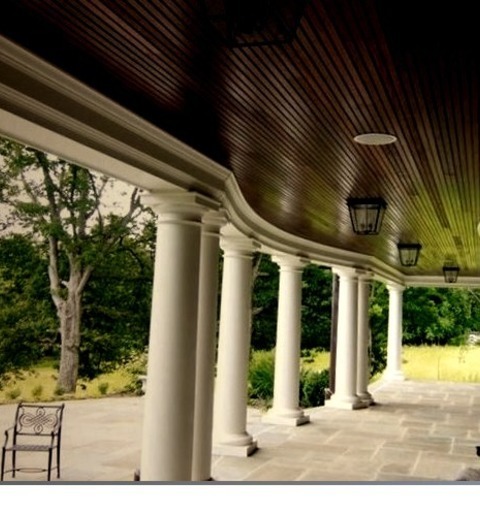
New York Backyard Huge classic stone back porch idea with a roof extension
0 notes
Text
cw: arranged marriage, fluff, neglect at the beginning, ratio falling hard, pining, ratio being jealous of aventurine, unedited bc i wrote this with my heart not my brain
my brain has been thinking about an arranged marriage fic with dr. ratio...
he isn't kind to you at first, less than happy to share a life with a mere acquaintance. he's heard about you before in passing, noting your achievements with a grain of salt because nothing about you particularly mattered to him, irrelevant against the mass of scrolls and books he needs to read.
you don't really disturb his normal routine too much. you move in to his estate with a fair share of your belongings, but none of them crowd his house too much. you have your own room, pristine guest room unearthed by your artistic touch.
aside from dinners, you don't get to see each other too much. he starts his mornings early, getting up at the crack of dawn to exercise and start his day with a hearty meal. you wake up later, partaking in a slow morning, and if you glanced out the window, you might be able to see your husband running laps around the expanse of his gardens.
you admire his dedication and routine, it's fascinating to live beside a genius. everyday, the chest table that sits in the living room changes, the black and white pieces never remaining where you last recalled. the size of his blackboard is impressive, and yet too small to fit all of the formulas his brain remembers, hands effortlessly dancing along the surface to scratch number after number.
a frequent order of his estate is chalk. a new pile is delivered every three days, and he goes through them without fail every time.
during dinner, he tries to spare some conversation with you. you don't tell him too much about your day, not wanting to bore him with your menial chores. he's only half-listening either way, so you'll feign understanding about his work when he explains what he's up to.
ratio is not an attentive husband, but he doesn't mistreat you, either. he allows you to spend his assets without too much care, doesn't police your everyday tasks, and also doesn't bat an eye at other men or women. his pursuit of intelligence is important, and your wellbeing would not come in between that.
your monotonous, distant routine changes one autumn dusk. you're perched in the front yard with an easel set up before you, the sky in front of you now a blend of pink-purple hues. he returns home earlier than you expected, carriage stopping at the front of his estate, and he witnesses you in your tranquil state.
the paint strokes on the canvas before you are skilled, and show years of dedication to the craft. you're so invested in the piece before you, that you don't even hear him approaching until he calls your name.
"the night turns colder with each minute. shouldn't you come inside before you fall ill?" the scholar greets, and you're snapped out of your creative reverie, looking over at him.
"oh, i had not realised. let me clean up here, first." you take your canvas off the easel, but to your surprise, your spouse kneels down to organise your oil paints back into their box.
"make haste, then," he urges.
during dinner, he can't help but be curious over your hobby, the stubborn splotches of paint clinging to your hands visible to him. that night, you engage in uninterrupted conversation, and discover that he's an artist himself- a sculptor. it calms him, and all the statues reside in a removed room, adjacent to his study.
despite your years of matrimony, you had never once dared enter his study, but the design is so fittingly him. it is organised (well, as organised a genius can be), with shelves and shelves filled with books, discarded scrolls lay around the room, but even then, his taste for greco-roman aesthetics are seen. roman dorics act like stands for little plants, and his many certificates are displayed, along with other achievements.
(his study is overwhelmingly filled with them. though you knew of the merit of the man you were arranged to be married to, you had never known just how expansive the list is. perhaps, that only made him more intimidating to you, standing beside a genius does not feel so light to say anymore.)
he shows you his sculptures, and though many of them are... self portraits... the likeness is disgustingly accurate. it was as if he had casted himself in plaster and displayed it proudly. you wonder how long he must have stared in the mirror to perfect their appearance.
but, there are also various other formidable statues. some of people you recognise. you compliment his skill and don't get to see the blush that spreads along his cheeks.
it seems that you've chipped a way into his heart, because between brushstrokes and chiselled marble, he falls in love with you.
ratio knows he didn't start off being the best husband, but he tries to now, and begins by being present. asks you to dine together where possible, listens when you're talking about your day, and the two of you can be seen venturing downtown together; an unbelievable sight for those who believed that ratio was romantically inept.
perhaps, an even more unbelievable sight, was the soft smile on his face that glanced at you very adoringly, and how you remained unaware of his affections.
and, maybe a jealous veritas ratio is just as unbelievable.
he is practically glaring daggers at the side of a certain blond's head. ratio has never been fond of the scheming businessman, aventurine, and is even less so of the fact that you seem so close to him, more than you are with your own husband. you're speaking with him like how one would with old friends, a peaceful visit to the markets turned sour by his presence.
when you finally, finally, finally, bid farewell to aventurine, who gave ratio a look that signified he was up to no good, your husband held your hand in his gloved one with an unforgiving grip. his mood is dampened for the remainder of the day, and is only made better when you enquire about his sudden glumness, visiting his office to see if he was alright.
you leave him with a kiss on the crown of his head, and a whisper of 'goodnight', before retreating to your chambers, and the only thought that circulates in his head for the rest of the night is you, and how he's going to sweep you off your feet.
#*ੈ✩‧₊˚ earf's ideas that i'll never write#earthtooz: honkai star rail#dr ratio x reader#veritas ratio x reader#honkai star rail x reader#hsr x reader#ratio x reader#dr ratio fluff#dr. ratio x reader
4K notes
·
View notes
Text
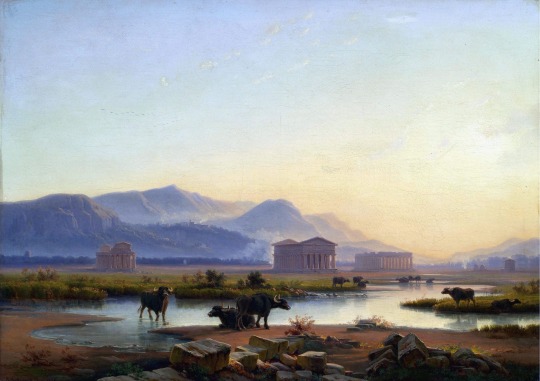
View of the Temples of Paestum in the evening light | Water Buffalo in the Campagna
by Edmund Hottenroth
#edmund hottenroth#art#paestum#temples#temple#landscape#water buffalo#mediterranean#italy#magna grecia#campagna#europe#european#animals#buffalo#southern italy#ruins#ancient greek#history#doric order#campania#salerno
176 notes
·
View notes
Text
Fantasy Guide to Interiors
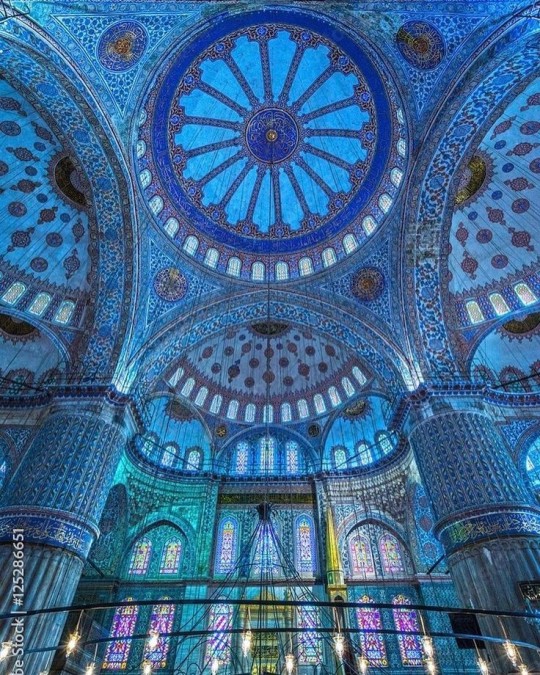
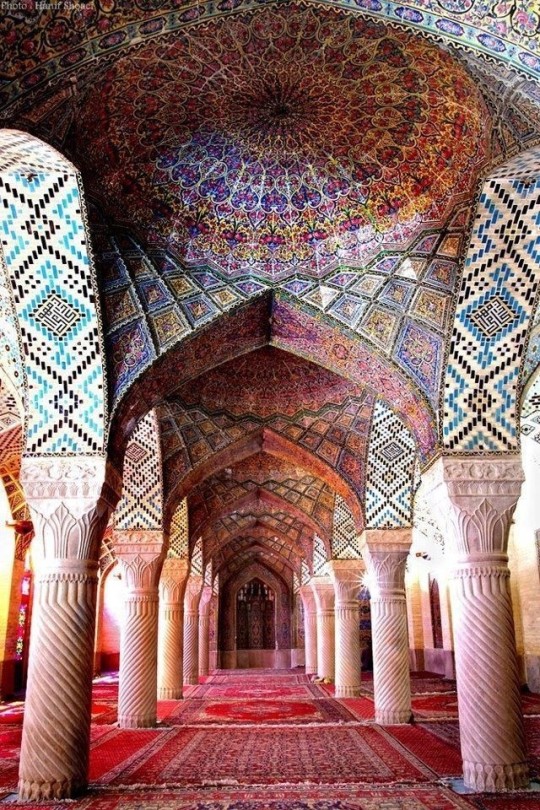
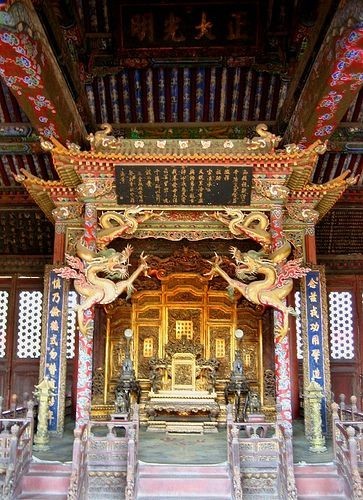
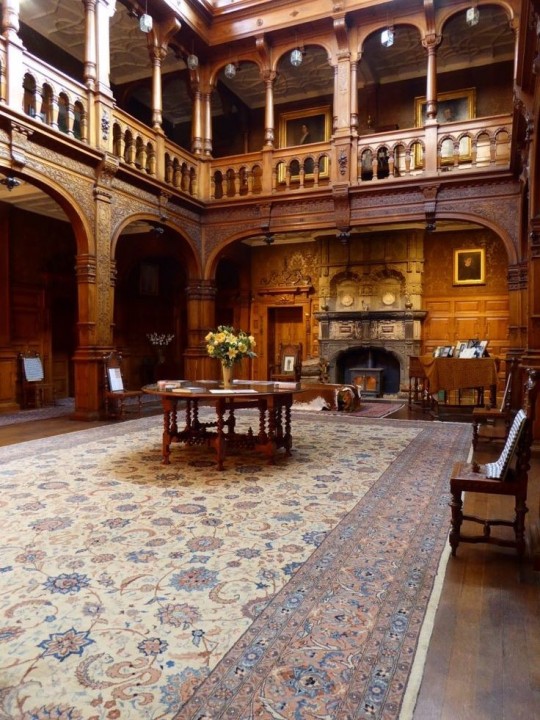
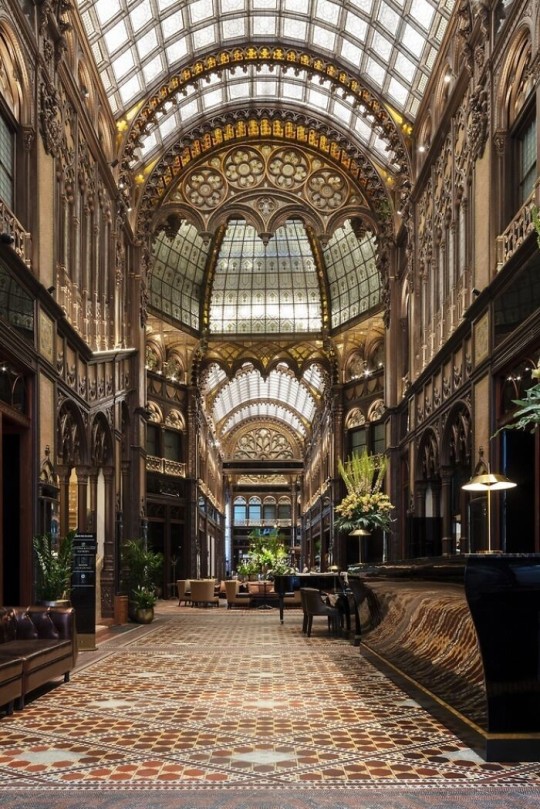
As a followup to the very popular post on architecture, I decided to add onto it by exploring the interior of each movement and the different design techniques and tastes of each era. This post at be helpful for historical fiction, fantasy or just a long read when you're bored.
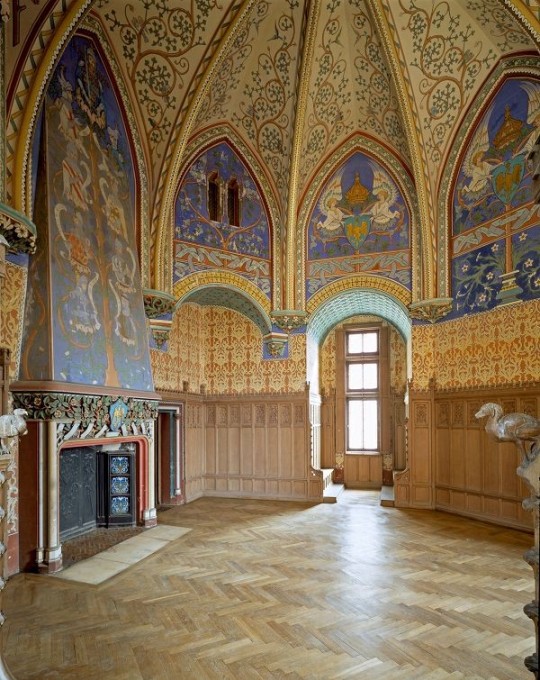
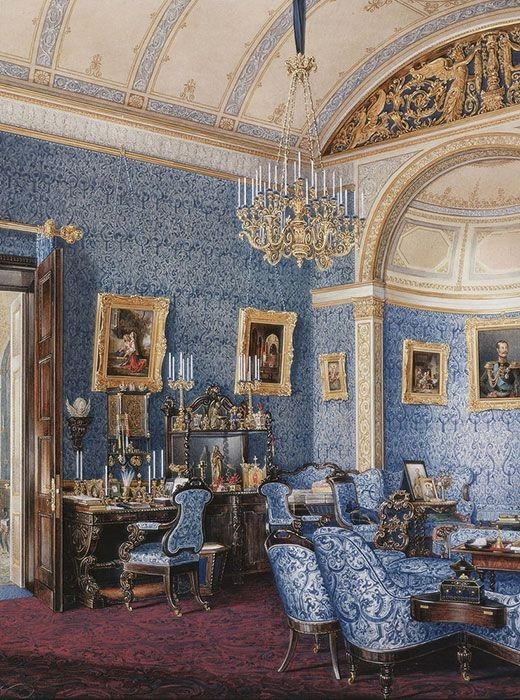
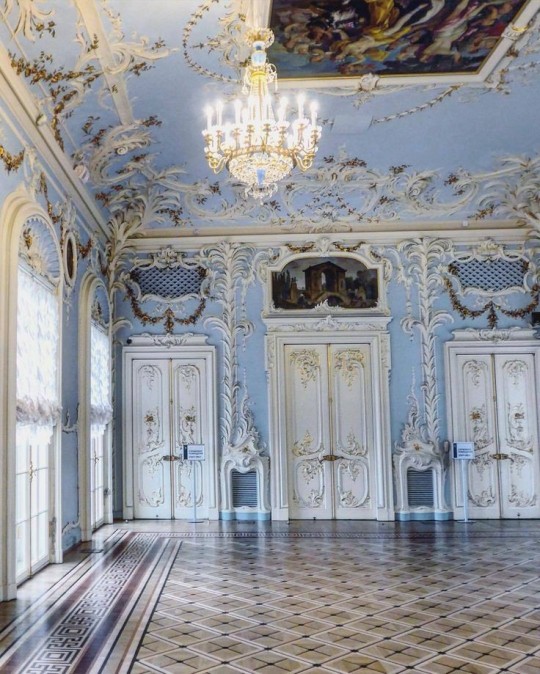
Interior Design Terms
Reeding and fluting: Fluting is a technique that consists a continuous pattern of concave grooves in a flat surface across a surface. Reeding is it's opposite.
Embossing: stamping, carving or moulding a symbol to make it stand out on a surface.
Paneling: Panels of carved wood or fabric a fixed to a wall in a continuous pattern.
Gilding: the use of gold to highlight features.
Glazed Tile: Ceramic or porcelain tiles coated with liquid coloured glass or enamel.
Column: A column is a pillar of stone or wood built to support a ceiling. We will see more of columns later on.
Bay Window: The Bay Window is a window projecting outward from a building.
Frescos: A design element of painting images upon wet plaster.
Mosaic: Mosaics are a design element that involves using pieces of coloured glass and fitted them together upon the floor or wall to form images.
Mouldings: ornate strips of carved wood along the top of a wall.
Wainscoting: paneling along the lower portion of a wall.
Chinoiserie: A European take on East Asian art. Usually seen in wallpaper.
Clerestory: A series of eye-level windows.
Sconces: A light fixture supported on a wall.
Niche: A sunken area within a wall.
Monochromatic: Focusing on a single colour within a scheme.
Ceiling rose: A moulding fashioned on the ceiling in the shape of a rose usually supporting a light fixture.
Baluster: the vertical bars of a railing.
Façade: front portion of a building
Lintel: Top of a door or window.
Portico: a covered structure over a door supported by columns
Eaves: the part of the roof overhanging from the building
Skirting: border around lower length of a wall
Ancient Greece
Houses were made of either sun-dried clay bricks or stone which were painted when they dried. Ground floors were decorated with coloured stones and tiles called Mosaics. Upper level floors were made from wood. Homes were furnished with tapestries and furniture, and in grand homes statues and grand altars would be found. Furniture was very skillfully crafted in Ancient Greece, much attention was paid to the carving and decoration of such things. Of course, Ancient Greece is ancient so I won't be going through all the movements but I will talk a little about columns.
Doric: Doric is the oldest of the orders and some argue it is the simplest. The columns of this style are set close together, without bases and carved with concave curves called flutes. The capitals (the top of the column) are plain often built with a curve at the base called an echinus and are topped by a square at the apex called an abacus. The entablature is marked by frieze of vertical channels/triglyphs. In between the channels would be detail of carved marble. The Parthenon in Athens is your best example of Doric architecture.
Ionic: The Ionic style was used for smaller buildings and the interiors. The columns had twin volutes, scroll-like designs on its capital. Between these scrolls, there was a carved curve known as an egg and in this style the entablature is much narrower and the frieze is thick with carvings. The example of Ionic Architecture is the Temple to Athena Nike at the Athens Acropolis.
Corinthian: The Corinthian style has some similarities with the Ionic order, the bases, entablature and columns almost the same but the capital is more ornate its base, column, and entablature, but its capital is far more ornate, commonly carved with depictions of acanthus leaves. The style was more slender than the others on this list, used less for bearing weight but more for decoration. Corinthian style can be found along the top levels of the Colosseum in Rome.
Tuscan: The Tuscan order shares much with the Doric order, but the columns are un-fluted and smooth. The entablature is far simpler, formed without triglyphs or guttae. The columns are capped with round capitals.
Composite: This style is mixed. It features the volutes of the Ionic order and the capitals of the Corinthian order. The volutes are larger in these columns and often more ornate. The column's capital is rather plain. for the capital, with no consistent differences to that above or below the capital.
Ancient Rome
Rome is well known for its outward architectural styles. However the Romans did know how to add that rizz to the interior. Ceilings were either vaulted or made from exploded beams that could be painted. The Romans were big into design. Moasics were a common interior sight, the use of little pieces of coloured glass or stone to create a larger image. Frescoes were used to add colour to the home, depicting mythical figures and beasts and also different textures such as stonework or brick. The Romans loved their furniture. Dining tables were low and the Romans ate on couches. Weaving was a popular pastime so there would be tapestries and wall hangings in the house. Rich households could even afford to import fine rugs from across the Empire. Glass was also a feature in Roman interior but windows were usually not paned as large panes were hard to make. Doors were usually treated with panels that were carved or in lain with bronze.
Ancient Egypt
Egypt was one of the first great civilisations, known for its immense and grand structures. Wealthy Egyptians had grand homes. The walls were painted or plastered usually with bright colours and hues. The Egyptians are cool because they mapped out their buildings in such a way to adhere to astrological movements meaning on special days if the calendar the temple or monuments were in the right place always. The columns of Egyptian where thicker, more bulbous and often had capitals shaped like bundles of papyrus reeds. Woven mats and tapestries were popular decor. Motifs from the river such as palms, papyrus and reeds were popular symbols used.
Ancient Africa
African Architecture is a very mixed bag and more structurally different and impressive than Hollywood would have you believe. Far beyond the common depictions of primitive buildings, the African nations were among the giants of their time in architecture, no style quite the same as the last but just as breathtaking.
Rwandan Architecture: The Rwandans commonly built of hardened clay with thatched roofs of dried grass or reeds. Mats of woven reeds carpeted the floors of royal abodes. These residences folded about a large public area known as a karubanda and were often so large that they became almost like a maze, connecting different chambers/huts of all kinds of uses be they residential or for other purposes.
Ashanti Architecture: The Ashanti style can be found in present day Ghana. The style incorporates walls of plaster formed of mud and designed with bright paint and buildings with a courtyard at the heart, not unlike another examples on this post. The Ashanti also formed their buildings of the favourite method of wattle and daub.
Nubian Architecture: Nubia, in modern day Ethiopia, was home to the Nubians who were one of the world's most impressive architects at the beginning of the architecture world and probably would be more talked about if it weren't for the Egyptians building monuments only up the road. The Nubians were famous for building the speos, tall tower-like spires carved of stone. The Nubians used a variety of materials and skills to build, for example wattle and daub and mudbrick. The Kingdom of Kush, the people who took over the Nubian Empire was a fan of Egyptian works even if they didn't like them very much. The Kushites began building pyramid-like structures such at the sight of Gebel Barkal
Japanese Interiors
Japenese interior design rests upon 7 principles. Kanso (簡素)- Simplicity, Fukinsei (不均整)- Asymmetry, Shizen (自然)- Natural, Shibumi (渋味) – Simple beauty, Yugen (幽玄)- subtle grace, Datsuzoku (脱俗) – freedom from habitual behaviour, Seijaku (静寂)- tranquillity.
Common features of Japanese Interior Design:
Shoji walls: these are the screens you think of when you think of the traditional Japanese homes. They are made of wooden frames, rice paper and used to partition
Tatami: Tatami mats are used within Japanese households to blanket the floors. They were made of rice straw and rush straw, laid down to cushion the floor.
Genkan: The Genkan was a sunken space between the front door and the rest of the house. This area is meant to separate the home from the outside and is where shoes are discarded before entering.
Japanese furniture: often lowest, close to the ground. These include tables and chairs but often tanked are replaced by zabuton, large cushions. Furniture is usually carved of wood in a minimalist design.
Nature: As both the Shinto and Buddhist beliefs are great influences upon architecture, there is a strong presence of nature with the architecture. Wood is used for this reason and natural light is prevalent with in the home. The orientation is meant to reflect the best view of the world.
Islamic World Interior
The Islamic world has one of the most beautiful and impressive interior design styles across the world. Colour and detail are absolute staples in the movement. Windows are usually not paned with glass but covered in ornate lattices known as jali. The jali give ventilation, light and privacy to the home. Islamic Interiors are ornate and colourful, using coloured ceramic tiles. The upper parts of walls and ceilings are usually flat decorated with arabesques (foliate ornamentation), while the lower wall areas were usually tiled. Features such as honeycombed ceilings, horseshoe arches, stalactite-fringed arches and stalactite vaults (Muqarnas) are prevalent among many famous Islamic buildings such as the Alhambra and the Blue Mosque.
Byzantine (330/395–1453 A. D)
The Byzantine Empire or Eastern Roman Empire was where eat met west, leading to a melting pot of different interior designs based on early Christian styles and Persian influences. Mosaics are probably what you think of when you think of the Byzantine Empire. Ivory was also a popular feature in the Interiors, with carved ivory or the use of it in inlay. The use of gold as a decorative feature usually by way of repoussé (decorating metals by hammering in the design from the backside of the metal). Fabrics from Persia, heavily embroidered and intricately woven along with silks from afar a field as China, would also be used to upholster furniture or be used as wall hangings. The Byzantines favoured natural light, usually from the use of copolas.
Indian Interiors
India is of course, the font of all intricate designs. India's history is sectioned into many eras but we will focus on a few to give you an idea of prevalent techniques and tastes.
The Gupta Empire (320 – 650 CE): The Gupta era was a time of stone carving. As impressive as the outside of these buildings are, the Interiors are just as amazing. Gupta era buildings featured many details such as ogee (circular or horseshoe arch), gavaksha/chandrashala (the motif centred these arches), ashlar masonry (built of squared stone blocks) with ceilings of plain, flat slabs of stone.
Delhi Sultanate (1206–1526): Another period of beautifully carved stone. The Delhi sultanate had influence from the Islamic world, with heavy uses of mosaics, brackets, intricate mouldings, columns and and hypostyle halls.
Mughal Empire (1526–1857): Stonework was also important on the Mughal Empire. Intricately carved stonework was seen in the pillars, low relief panels depicting nature images and jalis (marble screens). Stonework was also decorated in a stye known as pietra dura/parchin kari with inscriptions and geometric designs using colored stones to create images. Tilework was also popular during this period. Moasic tiles were cut and fitted together to create larger patters while cuerda seca tiles were coloured tiles outlined with black.
Chinese Interiors
Common features of Chinese Interiors
Use of Colours: Colour in Chinese Interior is usually vibrant and bold. Red and Black are are traditional colours, meant to bring luck, happiness, power, knowledge and stability to the household.
Latticework: Lattices are a staple in Chinese interiors most often seen on shutters, screens, doors of cabinets snf even traditional beds.
Lacquer: Multiple coats of lacquer are applied to furniture or cabinets (now walls) and then carved. The skill is called Diaoqi (雕漆).
Decorative Screens: Screens are used to partition off part of a room. They are usually of carved wood, pained with very intricate murals.
Shrines: Spaces were reserved on the home to honour ancestors, usually consisting of an altar where offerings could be made.
Of course, Chinese Interiors are not all the same through the different eras. While some details and techniques were interchangeable through different dynasties, usually a dynasty had a notable style or deviation. These aren't all the dynasties of course but a few interesting examples.
Song Dynasty (960–1279): The Song Dynasty is known for its stonework. Sculpture was an important part of Song Dynasty interior. It was in this period than brick and stone work became the most used material. The Song Dynasty was also known for its very intricate attention to detail, paintings, and used tiles.
Ming Dynasty(1368–1644): Ceilings were adorned with cloisons usually featuring yellow reed work. The floors would be of flagstones usually of deep tones, mostly black. The Ming Dynasty favoured richly coloured silk hangings, tapestries and furnishings. Furniture was usually carved of darker woods, arrayed in a certain way to bring peace to the dwelling.
Han Dynasty (206 BC-220 AD): Interior walls were plastered and painted to show important figures and scenes. Lacquer, though it was discovered earlier, came into greater prominence with better skill in this era.
Tang Dynasty (618–907) : The colour palette is restrained, reserved. But the Tang dynasty is not without it's beauty. Earthenware reached it's peak in this era, many homes would display fine examples as well. The Tang dynasty is famous for its upturned eaves, the ceilings supported by timber columns mounted with metal or stone bases. Glazed tiles were popular in this era, either a fixed to the roof or decorating a screen wall.
Romanesque (6th -11th century/12th)
Romanesque Architecture is a span between the end of Roman Empire to the Gothic style. Taking inspiration from the Roman and Byzantine Empires, the Romanesque period incorporates many of the styles. The most common details are carved floral and foliage symbols with the stonework of the Romanesque buildings. Cable mouldings or twisted rope-like carvings would have framed doorways. As per the name, Romansque Interiors relied heavily on its love and admiration for Rome. The Romanesque style uses geometric shapes as statements using curves, circles snf arches. The colours would be clean and warm, focusing on minimal ornamentation.
Gothic Architecture (12th Century - 16th Century)
The Gothic style is what you think of when you think of old European cathedrals and probably one of the beautiful of the styles on this list and one of most recognisable. The Gothic style is a dramatic, opposing sight and one of the easiest to describe. Decoration in this era became more ornate, stonework began to sport carving and modelling in a way it did not before. The ceilings moved away from barreled vaults to quadripartite and sexpartite vaulting. Columns slimmed as other supportive structures were invented. Intricate stained glass windows began their popularity here. In Gothic structures, everything is very symmetrical and even.
Mediaeval (500 AD to 1500)
Interiors of mediaeval homes are not quite as drab as Hollywood likes to make out. Building materials may be hidden by plaster in rich homes, sometimes even painted. Floors were either dirt strewn with rushes or flagstones in larger homes. Stonework was popular, especially around fireplaces. Grand homes would be decorated with intricate woodwork, carved heraldic beasts and wall hangings of fine fabrics.
Renaissance (late 1300s-1600s)
The Renaissance was a period of great artistry and splendor. The revival of old styles injected symmetry and colour into the homes. Frescoes were back. Painted mouldings adorned the ceilings and walls. Furniture became more ornate, fixed with luxurious upholstery and fine carvings. Caryatids (pillars in the shape of women), grotesques, Roman and Greek images were used to spruce up the place. Floors began to become more intricate, with coloured stone and marble. Modelled stucco, sgraffiti arabesques (made by cutting lines through a layer of plaster or stucco to reveal an underlayer), and fine wall painting were used in brilliant combinations in the early part of the 16th century.
Tudor Interior (1485-1603)
The Tudor period is a starkly unique style within England and very recognisable. Windows were fixed with lattice work, usually casement. Stained glass was also in in this period, usually depicting figures and heraldic beasts. Rooms would be panelled with wood or plastered. Walls would be adorned with tapestries or embroidered hangings. Windows and furniture would be furnished with fine fabrics such as brocade. Floors would typically be of wood, sometimes strewn with rush matting mixed with fresh herbs and flowers to freshen the room.
Baroque (1600 to 1750)
The Baroque period was a time for splendor and for splashing the cash. The interior of a baroque room was usually intricate, usually of a light palette, featuring a very high ceiling heavy with detail. Furniture would choke the room, ornately carved and stitched with very high quality fabrics. The rooms would be full of art not limited to just paintings but also sculptures of marble or bronze, large intricate mirrors, moldings along the walls which may be heavily gilded, chandeliers and detailed paneling.
Victorian (1837-1901)
We think of the interiors of Victorian homes as dowdy and dark but that isn't true. The Victorians favoured tapestries, intricate rugs, decorated wallpaper, exquisitely furniture, and surprisingly, bright colour. Dyes were more widely available to people of all stations and the Victorians did not want for colour. Patterns and details were usually nature inspired, usually floral or vines. Walls could also be painted to mimic a building material such as wood or marble and most likely painted in rich tones. The Victorians were suckers for furniture, preferring them grandly carved with fine fabric usually embroidered or buttoned. And they did not believe in minimalism. If you could fit another piece of furniture in a room, it was going in there. Floors were almost eclusively wood laid with the previously mentioned rugs. But the Victorians did enjoy tiled floors but restricted them to entrances. The Victorians were quite in touch with their green thumbs so expect a lot of flowers and greenery inside. with various elaborately decorated patterned rugs. And remember, the Victorians loved to display as much wealth as they could. Every shelf, cabinet, case and ledge would be chocked full of ornaments and antiques.
Edwardian/The Gilded Age/Belle Epoque (1880s-1914)
This period (I've lumped them together for simplicity) began to move away from the deep tones and ornate patterns of the Victorian period. Colour became more neutral. Nature still had a place in design. Stained glass began to become popular, especially on lampshades and light fixtures. Embossing started to gain popularity and tile work began to expand from the entrance halls to other parts of the house. Furniture began to move away from dark wood, some families favouring breathable woods like wicker. The rooms would be less cluttered.
Art Deco (1920s-1930s)
The 1920s was a time of buzz and change. Gone were the refined tastes of the pre-war era and now the wow factor was in. Walls were smoother, buildings were sharper and more jagged, doorways and windows were decorated with reeding and fluting. Pastels were in, as was the heavy use of black and white, along with gold. Mirrors and glass were in, injecting light into rooms. Gold, silver, steel and chrome were used in furnishings and decor. Geometric shapes were a favourite design choice. Again, high quality and bold fabrics were used such as animal skins or colourful velvet. It was all a rejection of the Art Noveau movement, away from nature focusing on the man made.
Modernism (1930 - 1965)
Modernism came after the Art Deco movement. Fuss and feathers were out the door and now, practicality was in. Materials used are shown as they are, wood is not painted, metal is not coated. Bright colours were acceptable but neutral palettes were favoured. Interiors were open and favoured large windows. Furniture was practical, for use rather than the ornamentation, featuring plain details of any and geometric shapes. Away from Art Deco, everything is straight, linear and streamlined.
#This took forever#I'm very tired#But enjoy#I covered as much as I could find#Fantasy Guide to interiors#interior design#Architecture#writings#writing resources#Writing reference#Writing advice#Writer's research#writing research#Writer's rescources#Writing help#Mediaeval#Renaissance#Chinese Interiors#Japanese Interiors#Indian interiors#writing#writeblr#writing reference#writing advice#writer#spilled words#writers
3K notes
·
View notes
Text
Some Architecture Vocabulary

Arcade: a succession of arches supported on columns. An arcade can be free-standing covered passage or attached to a wall, as seen on the right.
Arch: the curved support of a building or doorway. The tops of the arches can be curved, semicircular, pointed, etc.
Architrave: the lowest part of the entablature that sits directly on the capitals (tops) of the columns.
Capital: the top portion of a column. In classical architecture, the architectural order is usually identified by design of the capital (Doric, Ionic, or Corinthian).
Classical: of or pertaining to Classicism.
Classicism: a preference or regard for the principles of Greek and Roman art and architecture. Common classicizing architecture is a sense of balance, proportion, and “ideal” beauty.
Column: an upright post, usually square, round, or rectangular. It can be used as a support or attached to a wall for decoration. In classical architecture, columns are composed of a capital, shaft, and a base (except in the Doric order).
Cornice: the rectangular band above the frieze, below the pediment.
Dome: a half-sphere curvature constructed on a circular base, as seen on the right.
Entablature: the upper portion of an order, it includes the architrave, frieze and cornice.
Frieze: the wide rectangular section on the entablature, above the architrave and below the cornice. In the Doric order, the frieze is often decorated with triglyphs (altering tablets of vertical groves) and the plain, rectangular bands spaced between the triglyphs (called metopes).
Metopes: the rectangular slabs that adorned the outside of Doric temples, just above the exterior colonnade.
Order: an ancient style of architecture. The classical orders are Doric, Ionic, or Corinthian. An order consists of a column, with a distinctive capital, supporting the entablature and pediment.
Pediment: a classical element that forms a triangular shape above the entablature. The pediment is often decorated with statues and its sides can be curved or straight.
Pronaos (pro-NAY-us): the entrance hall of a temple.
Triglyphs: a decorative element of a frieze consisting of three vertical units.
Vault: an arched ceiling usually made of wood or stone, as seen on the right.
Source ⚜ More: Word Lists ⚜ Notes ⚜ Writing Resources PDFs
#writeblr#writing notes#terminology#writers on tumblr#architecture#writing prompt#poetry#literature#poets on tumblr#spilled ink#creative writing#writing reference#dark academia#light academia#lit#worldbuilding#studyblr#langblr#booklr#bookblr#word list#writing resources
707 notes
·
View notes
Note
Hello, I hope this message finds you well. Do you have examples of what Odysseus and Penelope (and other people) would have worn in ancient Greece?
Thank you very much my dear Anon I am doing quite well.
Sure we can bring some examples up. In fact I asked an ask a little while back on this so here goes
So for Odysseus and Penelope we are expecting to see what the Myceneans wore at that time and by n large we have similar aesthetic with the Minoans but we have a bit more practical fashion as well given how Myceneans also gave good attention to military activities at least if we judge by their artwork.
We have a series of colorful combinations in clothing for both men and women and we do seem to see short chitoniskoi for men and long pleated dresses for women while for official occasions women still wear the open-chested dresses, as I mention to my other reply as well.
For armors you can look at the work of the amazing Dimitris Katsikis who creates some amazing recreations of the armors:
For clothing you can see more on some recreations as given by @venomspecs here:
For Penelope given how her veil is often mentioned I definitely also imagined something like this:

(This recreation was of massive inspiration to me to create also Achilles's attire for his disguise in Skyros)
So we have basically woven clothing in various patterns and colors, accessories from beads or metals and many more. I would also recommend you to check @tchai-castor 's blog for they studied fashion history and do some very good job with the outfits of the characters in their artwork!
Hope this helps! ^_^
#katerinaaqu answers#greek mythology#tagamemnon#mycenean#mycenean fashion#ancient greek clothing#odysseus#penelope#odypen#the odyssey#homeric poems
54 notes
·
View notes
Text
🦉Athena Masterpost🦉
This masterpost will cover very basic information with links to further posts or resources (otherwise it’s super long) and may be updated in the future. Basic bibliography at the end. I welcome you to share your UPG and resources in the comments - I won’t differentiate between mine and others’ UPG.
UPG = Unverified Personal Gnosis, SPG = Shared Personal Gnosis, H = Historically Inspired association
Last updates: 5 Feb 2025, added my ko-fi / 4 March 2025, added a link to Additional Info Posts - Athena & Minerva / 23 March, minor appearance edits
Love this post? Consider thanking me with a small donation to my ko-fi!

🦉Overview🦉
Athena is the Hellenic goddess associated most commonly with wisdom, war, weaving, and in modern times, education and knowledge. She was a goddess who occupied both masculine and feminine roles in a highly patriarchal society, standing outside the societal binary. She is a fascinatingly variable and nuanced deity who has adapted and persisted in the mind of western society until this day. This masterpost is in dedication to her.
“Through our investigation of [Athena’s] role within the pantheon, she has emerged as a power of technology and creativity who promotes creativity and order, but with another side to her power, that of the storm bringer and warmonger.” -Susan Deacy
🦉Domains🦉
Metis (Cunning, Practical Wisdom)
Skills
Crafts
Invention
War
Civilization & Civic Institutions
Hero Mentorship
Education and Knowledge [Modern SPG]
IT and Engineering [UPG]
🐍Find out More!🐍

🦉Symbols, Colors & Tarot Cards🦉
Traditional:
Owls (Specifically the Little Owl, Athene noctua)
Snakes
Horses
Olive trees
The Aegis (Fringed goat skin sometimes depicted as a shield)
The Gorgoneion (Protective symbol depicting a gorgon head)
Spindle
Spear
Helmet (Particularly with gryphons and/or sphinxes on it).
Crows (In Messenia and Boeotia, though elsewhere she was not fond of them)
Gulls
Other symbols: Spiders [Roman & SPG], Books and Scrolls [SPG], Pens or Quills [UPG], Pallas symbol [SPG], Snow Leopards [UPG], Bees [UPG]
Colors: Saffron/Yellow/Orange/Gold [H], Murex Purple [H], Hyacinth Blue [H], Red [H?], Bronze [H], Green [UPG]
🐍Find out More!🐍
Tarot Cards (All UPG/SPG of course): The Emperor, The Hierophant, The Chariot, Strength, Justice, The World, Knight of Pentacles, Queen & King of Swords, Queen & King of Wands

🦉Name & Epithets🦉
Athena has some variations in name. The Attic form was “Athenaia”, which was contracted to “Athena,” the Ionian form was “Athenaie,” the Doric form “Athana,” in Aeolic, “Athanaa,” and in epic she was “Athenaie,” shortened to “Athene.”
A few common epithets:
Areia - Warlike
Ergane - The Worker
Glaukôpis - Bright/owl-eyed.
Pallas - Refers either to the myth of Athena’s childhood friend Pallas, or of the giant named Pallas whom she slayed.
Parthenos - Maiden
Polias - Of the City
Polymetis - Cunning in many ways
🐍Find out More!🐍

🦉Offerings and Devotional Acts🦉
This section was super long! Only including a few here but check out the link!
Gemstones & Metals - Gold, Lapis Lazuli, Onyx, Iolite
Plants - Olive, Ivy, Thyme, Rosemary, Cypress, Peppermint, Orange
Incense and Fragrances - Frankincense, Thyme, Bay Laurel, Amber, Myrrh, Dragon’s Blood, Orange, Citrus, Cedarwood, Cinnamon, Cypress, Bergamot & Sage
Food & Drink - Olives and Olive Oil, Honey, Milk, Cheese, Cereal Grains, Diluted Wine, Bread, Baked Goods, Fish, Meat, Fruit/Fruit Juice, Water
🐍Find out More!🐍

🦉Athenian Festivals🦉
Athena’s main festivals were the Panathenaia, Khalkeia, Kallynteria and Plynteria. It is up to individuals to decide if and how to include these celebrations in their practice.
Panathenaia: The biggest festival for Athena taking place annually, but with a bigger version every fourth year. Mainly a festival with athletic, poetry and musical competitions.
Kallynteria and Plynteria: Sacred days centered around cleaning.
Arrephoria: A mysterious festival that took place at night and is theorized to have been a fertility rite.
Khalkeia: The festival of artisans, which celebrated Athena and Hephaestus.
🐍Find out More!🐍

🦉Family & Connections🦉
Parents: Athena’s father was Zeus (Except in Libya, where she was known as Poseidon’s daughter) and her mother was the personification of wisdom, Metis. In some sources she was raised by Triton alongside his daughter, Pallas.
Children: Athena had no children as a virgin goddess but she did adopt and raise Erichthonius, who later became king of Athens.
Retinue: Athena was often associated closely with Nike (Victory), an example being the famed statue Athena Parthenos, which held Nike in its hand. The aegis which Athena wore also contained the personifications Phobos (Fear), Eris (Strife), Alke (Strength) and Ikoe (Panic) as noted in the Iliad.
Companions: Pallas is perhaps the most famous of Athene’s companions, as the two girls grew up together until Athena accidentally killed Pallas and afterwards took on her name as an epithet. However, in the Homeric Hymn 2 to Demeter it is shown that Athena, Artemis and Persephone spent time together and were playing and collecting flowers before Persephone was abducted. The Greek historian Diodorus Siculus claims they were also raised together.
Heroes: Athena was a mentor of Heroes and had a hand in assisting heroes such as Herakles, Odysseus and Diomedes, but also Achilles, Bellerophon, Perseus, Theseus, Kadmos and Tydeus.

🐍More of my Info Posts!🐍
Athena and Childbirth
Athena Hippia / Khalinitis
On The Nature of Metis - Excerpts from “Cunning Intelligence in Greek Culture and Society”
On the comparison of Athena and Ares
Athena and Herakles: Excerpt from Susan Deacy’s book
Myth of Athena's Birth
Comparing Athena and Minerva

🐍Extra Links🐍
Prayers, Hymns and Poems
Homeric Hymn to Athena 11 [Tumblr - Mine]
Homeric Hymn to Athena 28 [Tumblr - Mine]
Poem for Athena [Tumblr - Mine]
Adaptation of the Orphic Hymn [Tumblr - wisdomweaver]
Ode to Athena: A Birth of Wisdom [Tumblr - panjackdaw]
Prayer to Athena [Tumblr - rue-with-the-tarot]
Hymn to Athena [Tumblr - entricacies]
Praise to Athena [Tumblr - piristephes]
Prayer for Clarity and Sound Intuition [Tumblr - crimsonsongbird]
Prayer for Athena [Tumblr - hisfleur]
Prayer for Athena [Tumblr - evilios]
Prayer to Athena [Tumblr - ranger5000]
Chin Up - A Message From Athena [Tumblr - crimsonsongbird]
Assortment of Prayers [Website - greekpagan.com]
Battle Armor Poem [Tumblr - crimsonsongbird]
A Prayer to the Wise Short Poem [Tumblr - crimsonsongbird]
Learning Short Poem [Tumblr - Mine]
Additional Links
Theoi.com [Website]
Iliad - Athena dons the Aegis [Tumblr - Mine]
Reconstruction of Athena Parthenos statue’s colors [Youtube - Museum of Fine Arts, Boston]
Bathing of Athena in Argos [Tumblr - verdantlyviolet]
Subtle Athena Worship [Tumblr - khaire-traveler]
A response to the “Athena is a victim blamer and hates women” crowd [Tumblr - rightwheretheyleftme]
khaire-traveler on their snow leopard UPG [Tumblr]
Parthenon 3D Reconstruction [Youtube - Ancient Athens 3D]
Parthenon in AC: Odyssey [Youtube - Invicta]

🦉Bibliography🦉
Barber, E.J.W. - The peplos of Athena
Burkert, Walter - Greek Religion
Deacy, Susan - Athena
Deacy, Susan & Villing, Alexandra - Athena in the Classical World
Deacy, Susan & Villing, Alexandra - What was the colour of Athena's Aegis?
Detienne, Marcel & Vernant, Jean-Pierre - Cunning Intelligence in Greek Culture and Society
Drees, Ludwig - Olympia
Larson, Jennifer - Ancient Greek Cults
Mansfield, John Magruder - The Robe Of Athena And The Panathenaic "Peplos"
Maurizio, Lisa - Classical Mythology in Context
Mikalson, Jon D. - Ancient Greek Religion
Ogden, Daniel - A Companion to Greek Religion
Theoi.com

#Athena Masterpost#Athena#Athena Deity#Athena Goddess#Athena Worship#Helpol#hellenic polytheism#hellenic polytheist#hellenic paganism#paganblr#hellenic pagan#paganism#athena devotion#athene
70 notes
·
View notes
Text
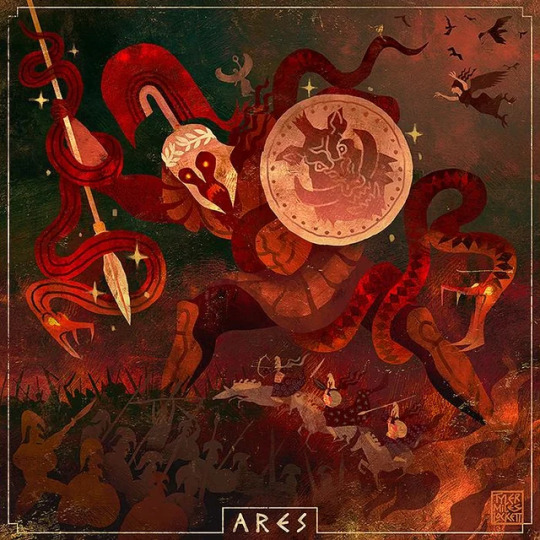
Ares/Thracian "Dionysos", A cognate of Rudlos?
This is one I will add for a more personal reason, but I think he has some connections. I'll explain but bare with me and acknowledge I consider more a UPG association than anything else. Perhaps someone here will find my shot in the dark interesting.
One of the twelve Olympians, son of Zeus, god of war, battlelust, courage and civil order. He is also associated Masculinity in general and modern Hellenists/Hellenic Polytheists often share the Personal Gnosis that he is a patron of mental health and one's struggle with it.
Now first, let me lay out a few facets of Ares I consider notable to this list. Although he is sometimes depicted as a mature, bearded man, especially after his syncretization with Mars, he is also often depicted as a spear-wielding(a common symbol to the cognates of Rudlos), nude, beardless youth, an ephebe. This brings to mind the connections between the ephebes and nude fighting, and the Koryos.
He was and is often shown diametrically opposed to Athena, Goddess of strategy, craftsmanship, and wisdom. Many misconstrue this as characterizing the "strategic and humane" warfare of Athena to the "savage and cruel" warfare of Ares. This could not be more wrong, as we have many stories of Athena encouraging, well, warcrimes, and Ares respecting another's honor.
The more accurate dichotomy is a much older, pan Indo-European one. One of defensive vs aggressive warfare. I have written earlier about the idea that Rudlos was the god of aggressive war, the marauding Koryos, counter-posed to the defensive Perkwunos, who protects the people and village from such raiders, and humanity at large from the demons of chaos, like Wṛ́tros. It is also widely accepted that Athena was formed from lesser, individual cults of palace goddesses, patrons of the individual homes of rulers, and later the cities they ruled, who later melded together into the panhellenic Athena, who likely takes her name from Athens and not the other way around as myth relates to us.
The crux of my theory is that rather than be actually being descended from the original PIE gods associated with these two forms of war, Ares and Athena sort of stepped into the molds they left behind, Ares particularly so.
The etymology of the name Ares is traditionally connected with the Greek word ἀρή (arē), the Ionic form of the Doric ἀρά (ara), "bane, ruin, curse, imprecation". Walter Burkert notes that "Ares is apparently an ancient abstract noun meaning throng of battle, war." Beekes has suggested a non-IE, Pre-Greek origin of the name. The earliest attested form of the name is the Mycenaean 𐀀𐀩, a-re.
The epithet, Areios ("warlike") was frequently appended to the names of other gods when they took on a warrior aspect or became involved in warfare: Zeus Areios, Athena Areia, even Aphrodite Areia ("Aphrodite within Ares" or "feminine Ares"), who was warlike, fully armored and armed, partnered with Athena in Sparta, and represented at Kythira's temple to Aphrodite Urania. In the Iliad, the word ares is used as a common noun synonymous with "battle."
He was also known by the name/epithet Enyalius. In Mycenaean times Ares and Enyalius were considered separate deities. Enyalius is often seen as the God of soldiers and warriors from Ares' cult. It has been suggested that the name of Enyalius ultimately represents an Anatolian loanword, although an alternative hypotheses treat it as an inherited Indo-European compound. The meaning is still unknown however.
Now, while it is indeed possible that Ares was a Pre-Greek(or perhaps even foreign) deity adopted by the Greeks, his character lines up closely with the IE idea of deified abstractions. The PIE's believed that if any idea exists, their must be a god who rules over it. In the absence of assigning it to a previously worshiped deity, they would deify the abstraction itself, this is the origin of the PIE god Xaryomen, Roman Fortuna, the various female night personifications throughout the IE world(Nyx, Nott, etc), among many others.
However there are two issues. First, his name is not IE in origin. It's seemingly a common noun, one widely adopted by IE people but still strange nonetheless. The second is his breadth of myth and variety of cultic practice, which is extremely strange for a supposed abstraction. For example, in parts of Anatolia, he had an oracular cult.
Consider his mythic origin for a moment. His birthplace was said to be Thrace, and he was believed by the Greeks to be the progenitor of their people. There is no well known obvious cognate of Ares is Thrace, so it is likely an association made by the Greeks because of the Thracian's martial skill and perceived warlike nature. However the cult of a Thracian god referred to as "Dionysus" was very widespread. Most believe him to be a separate deity. His connections to prophecy, poetry, war, and his identification with Apollon could indicate some connection to Rudlos, but his association with a solar cult feels potentially contradictory, at the very least could go either way because Apollonian influence and Rudlos-Dyeus identification in neighboring Anatolia.
Okay, enough rambling, let's get to personal, 100% UPG crackpot theory. When the IE Greeks encountered the Pre-Greek, Anatolian, and Minoan cultures, we know they adapted much of their culture and religion. Consequently, many IE deities were lost or altered beyond recognition. Rudlos's cult started to disappear before the Mycenaean age, and was then re-adopted/altered via Anatolian Apollon. During Rudlos's initial disintegration, most of his war-related aspects may have jumped ship and been given over to a newly formed/adopted deity, Ares/Enyalius. His aspect/son Leudhero may have influenced Dionysus in a similar manner.
To be clear, we will not considered Ares a cognate of Rudlos moving forward but I thought I would give you something I've been pondering while I continue to work on the next parts for the Rtkona series.
#paganism#deity worship#pagan#pagan revivalism#pie paganism#pie pantheon#pie polytheism#pie reconstructionism#pie religion#proto indo european paganism#hellenism#hellenic polytheism#hellenic deities#hellenic worship#helpol#ares#rudlos#reconstructionist paganism
27 notes
·
View notes
Text
. . . annabeth chase










˖°𓇼gf!annabeth who asks piper what she's supposed to do on valentines. gf!annbeth who just ends up bringing you to the library with her because it's valentines day but she has assignments to do (you did say you're fine with anything as long as it's with her.) gf!annabeth who cuddles with you in the beanbag in the corner while she reads. gf!annabeth who asks you what you're reading and takes breaks so that you can catch her up on the chapters you've read. gf!annabeth who listens to soft music with you and passing the time just tangled up on the chair. gf!annabeth who finally stands up, stretches, and offers to go grab a coffee. gf!annabeth who watches you fondly as you're doing something as simple as drinking coffee. gf!annabeth who surprises you and pulls out a few letters she'd written for you (even though she's smart she's still dyslexic, so you really cherish them because she put in the time and effort to write those for you). gf!annabeth with whom you spend the whole day just relaxing and chill. gf!annabeth who lowkey panics at the end of the day wondering if she'd been too bland or boring for you but you reassure her that everything was just perfect. gf!annabeth watches you slowly start to fall asleep next to her with so much fond softness in her eyes, knowing that this relationship was something she had to build with you, knowing that it won't be perfect and always beautiful but it would be sturdy and last for millennia or more.

you're standing beside annabeth, waiting for her to finish picking out a new book to read. she's looking in the top shelf so she's on a ladder, and you're boredly leaning against the bookshelf with some greek architecture book spread open in your hands.
annabeth hums in satisfaction when she finds what she's looking for, starting down the ladder again with about three books stacked in her arms. you glance at her for a split-second before looking back at your page.
"annie," you call out to get her attention.
"hm, yes?" she peeks at your book, eyebrows raising when she sees your reading topic. "oh, you're reading on architecture? you can just ask me too."
"uh huh, yes. kiss, marry, kill - doric, ionic, corinthian."
the blonde blinks at your unexpected question, pausing midway down. "what?"
"i feel like i'ma kill doric, it's too basic. corinthian is too much for me, personally, so i'll kiss corinthian and marry ionic because wow that one's just gorgeous." annabeth almost snorts at the genuine thought behind your eyes, as if it was a serious topic.
"you're definitely ionic, annie. however corinthian gives off rich vibes but it's probably filled with issues. hm."
she couldn't stop herself. "did you know that there are actually two more types of columns, by the romans this time? they added these to the classical orders of architecture, which beforehand included doric, ionic, and corinthian. the two are called tuscan and composite, and if doric is basic to you then tuscan is definitely even more so. composite is characterized by-"
annabeth gives you a lesson on greek columns alone, right there and then. you love her, you really do, but once you get her started on architectural types and methods it's hard to get her to stop.
you had to get creative.
the daughter of athena stops talking abruptly mid-sentence, silenced by your lips on hers. you pull away slowly, expression both sheepish and unapologetic at the same time, mischievous.
she's not pleased. or isn't she? because who would've guessed annabeth chase, daughter of wisdom, would be happily kissing somebody behind public library bookshelves?

dividers by: @strangergraphics and @roseraris
#🌘 — works#2025 valentines day event#percy jackson#pjo#percy jackon and the olympians#hoo#heroes of olympus#toa#trials of apollo#annabeth chase x y/n#annabeth chase x reader#annabeth chase x gn!reader#annabeth chase x gender neutral reader#annabeth chase x female reader#annabeth chase x fem!reader#gn!reader#fem!reader#pjo tv#pjo fanfic#annabeth chase
77 notes
·
View notes
Photo
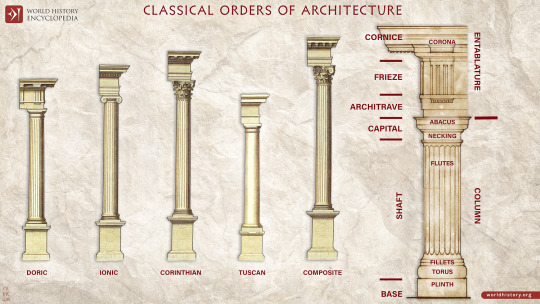
The Classical Orders of Architecture, rooted in ancient Greece and further developed by the Romans, are essential design principles shaping classical and neoclassical buildings. These orders - Doric, Ionic, and Corinthian - have their roots in ancient Greek architecture, while the Romans introduced Tuscan and Composite which share common elements but exhibit distinct new characteristics. Doric emphasizes simplicity, Ionic introduces slender and graceful sophistication, Corinthian showcases ornate grandeur, Tuscan exhibits refined simplicity, and Composite blends Ionic and Corinthian elements. Widely adopted during the Renaissance and Neoclassical periods, these orders remain influential, emphasizing proportion, balance, and aesthetic harmony in architectural design.
56 notes
·
View notes